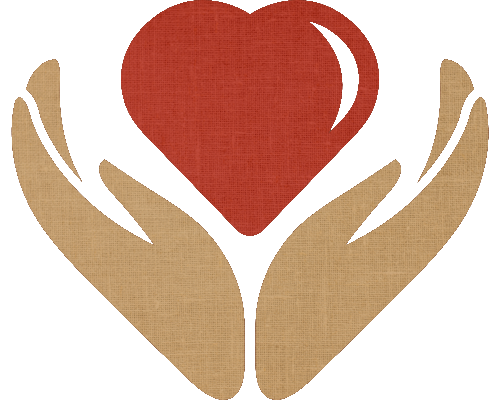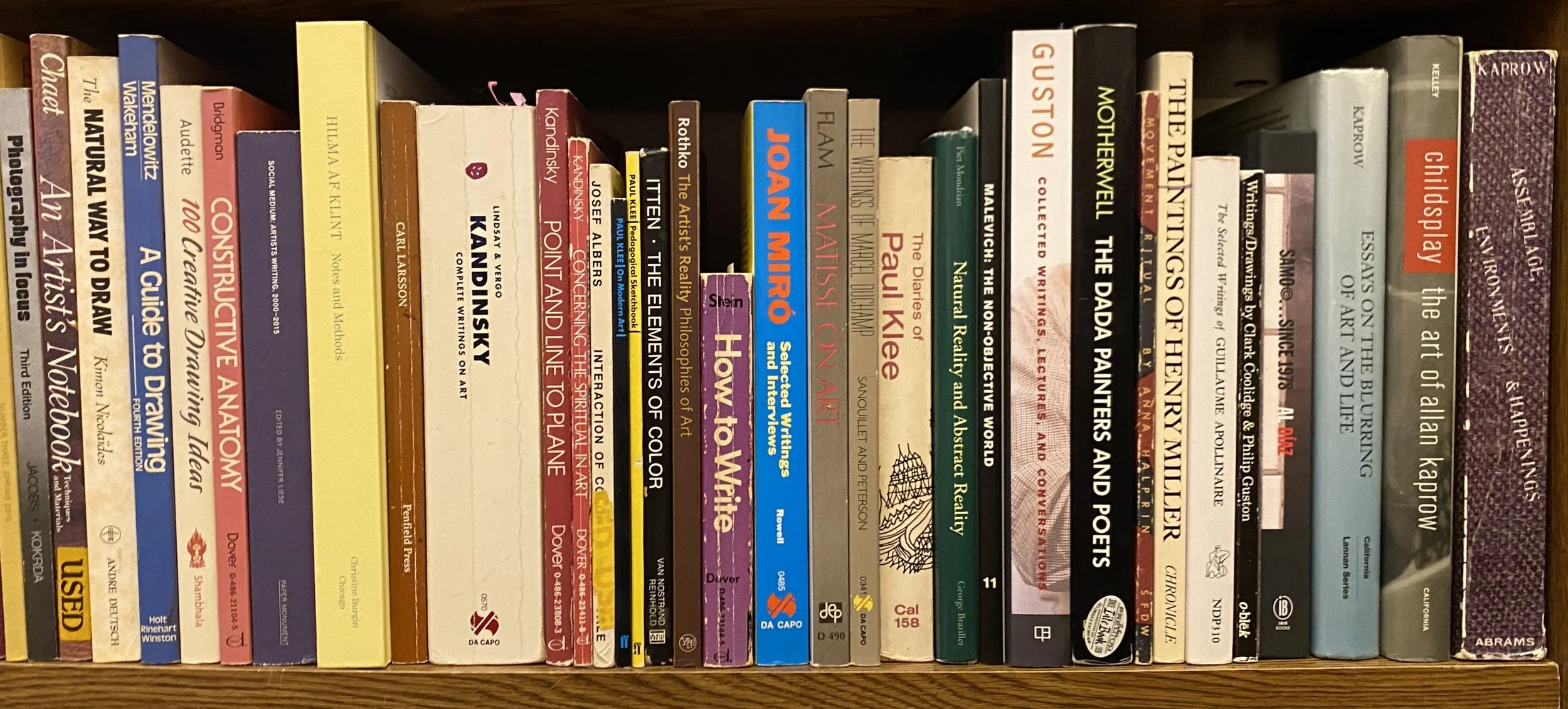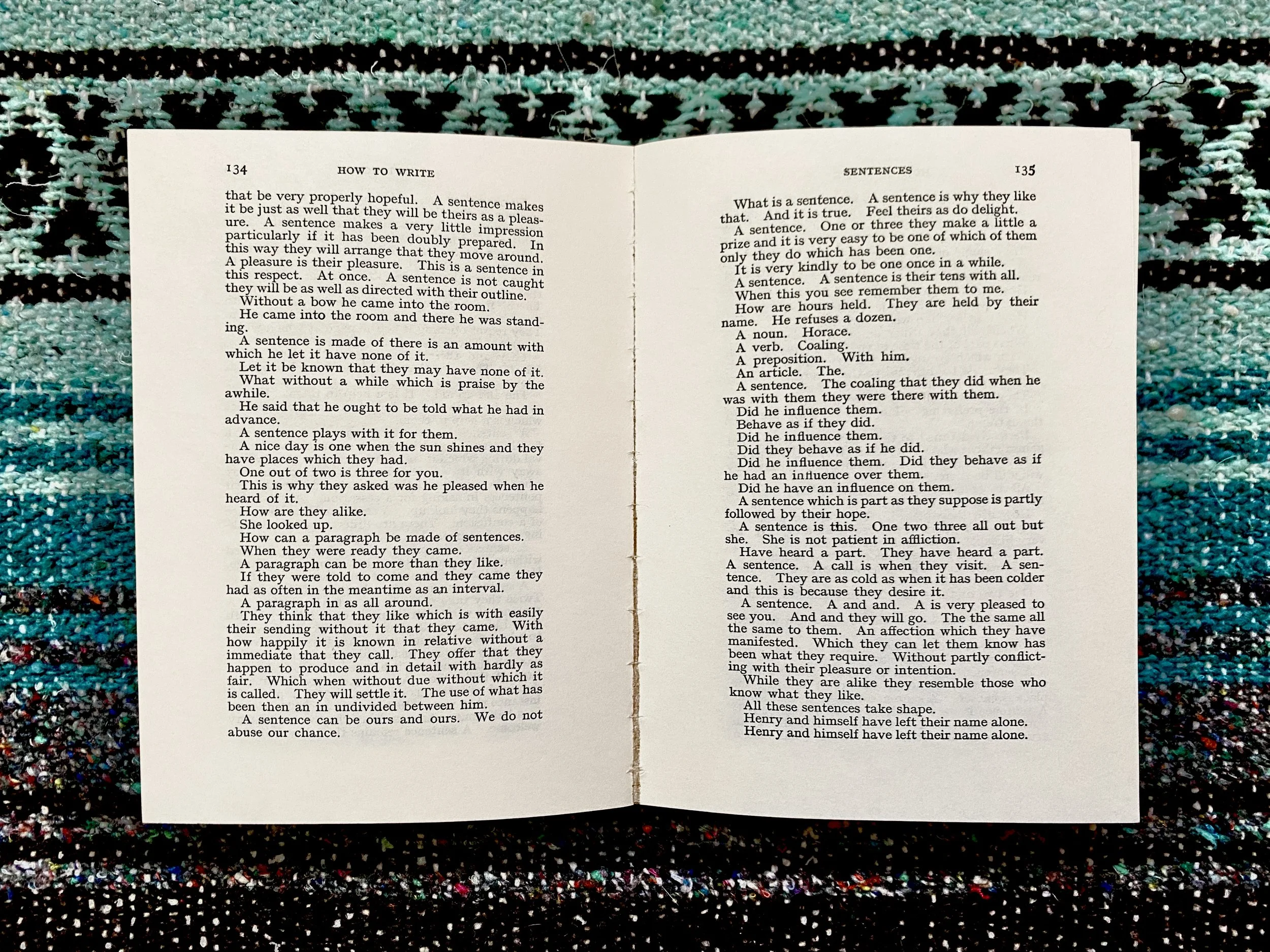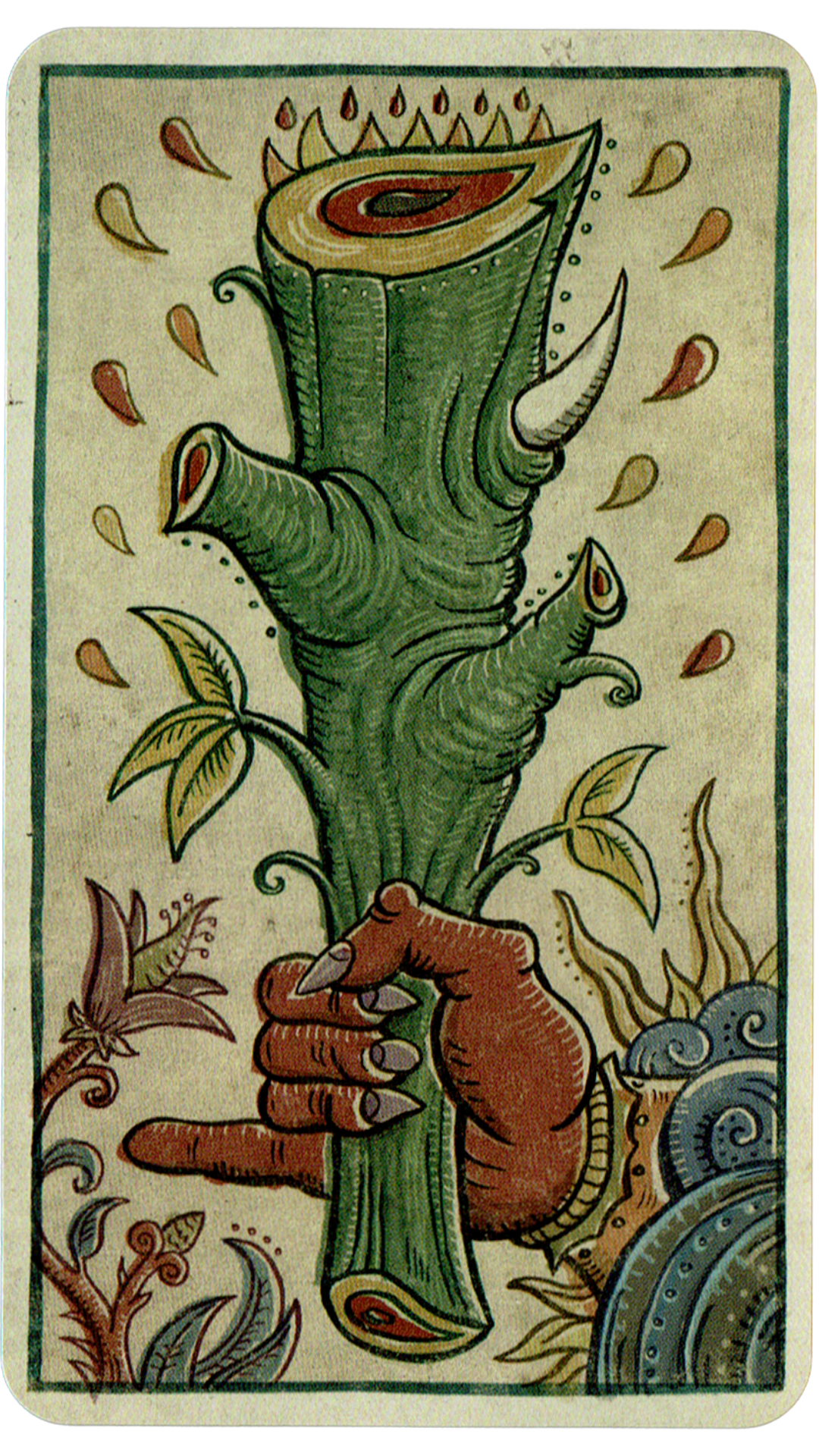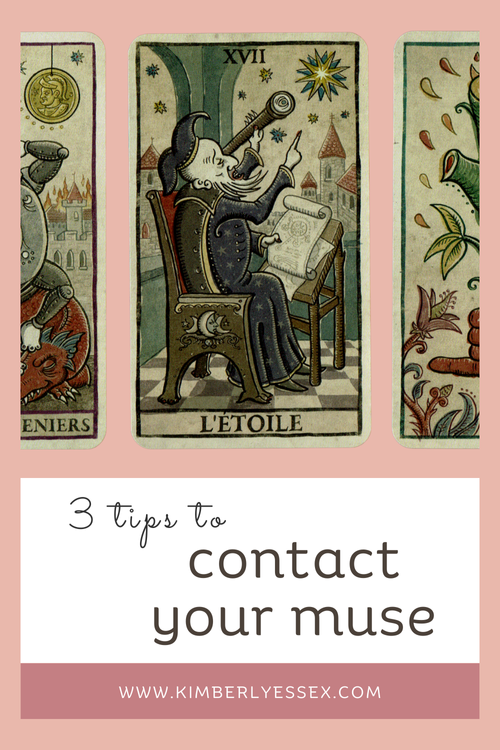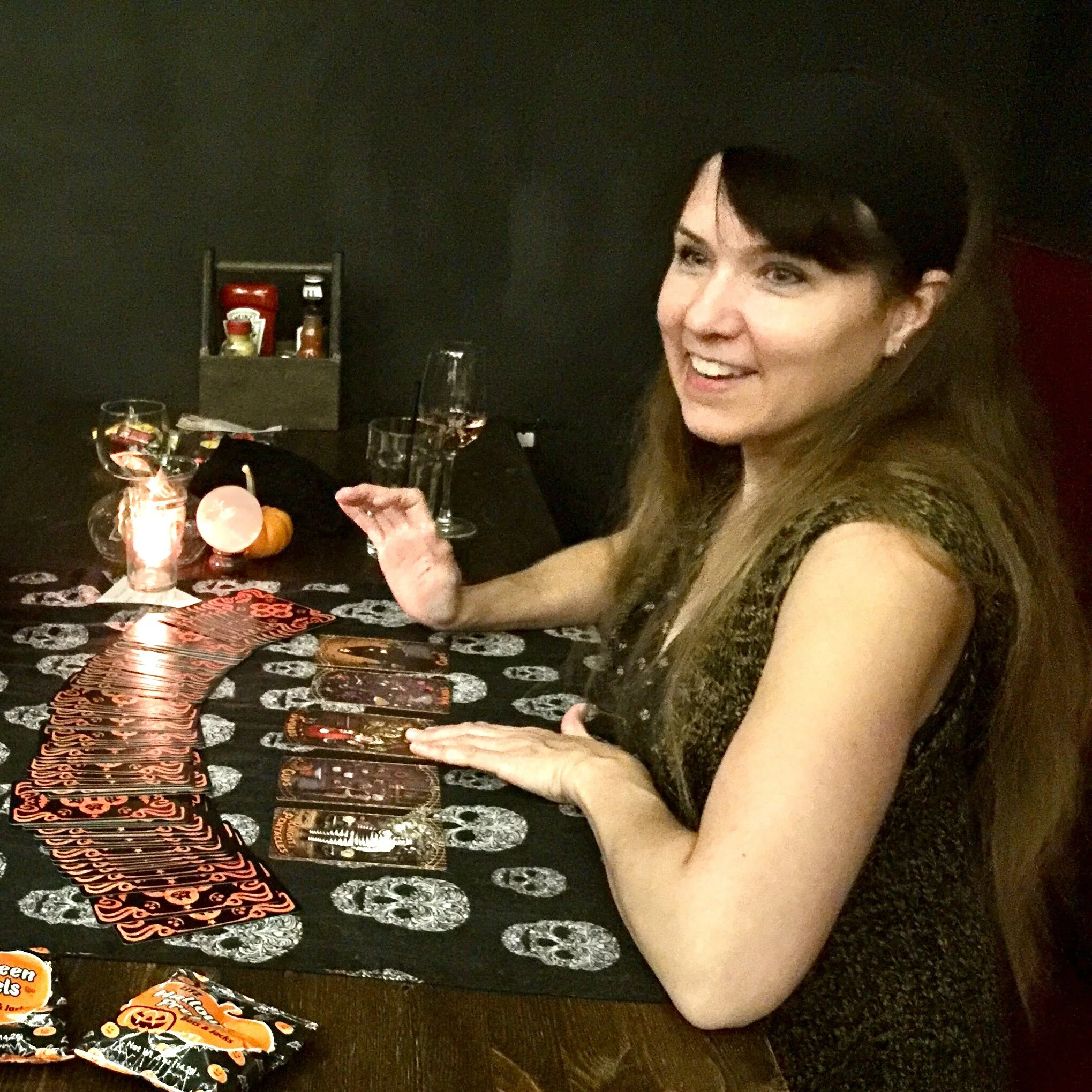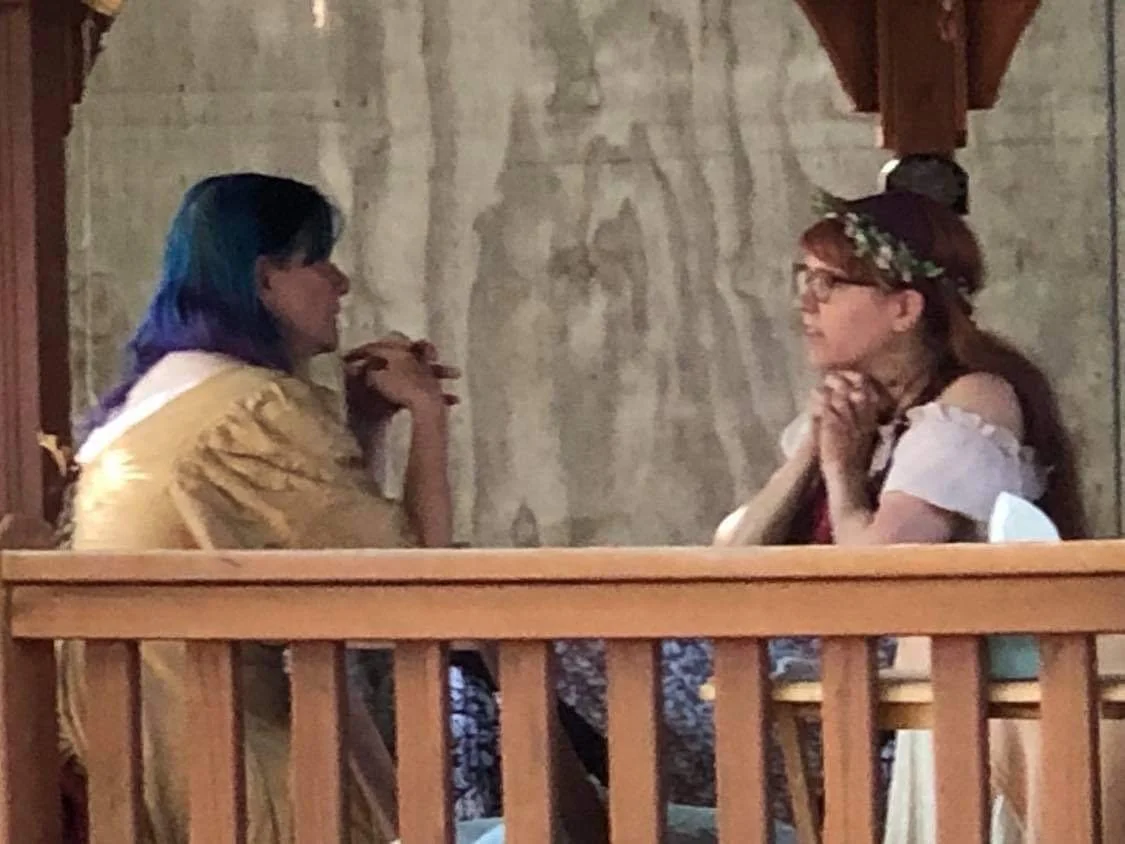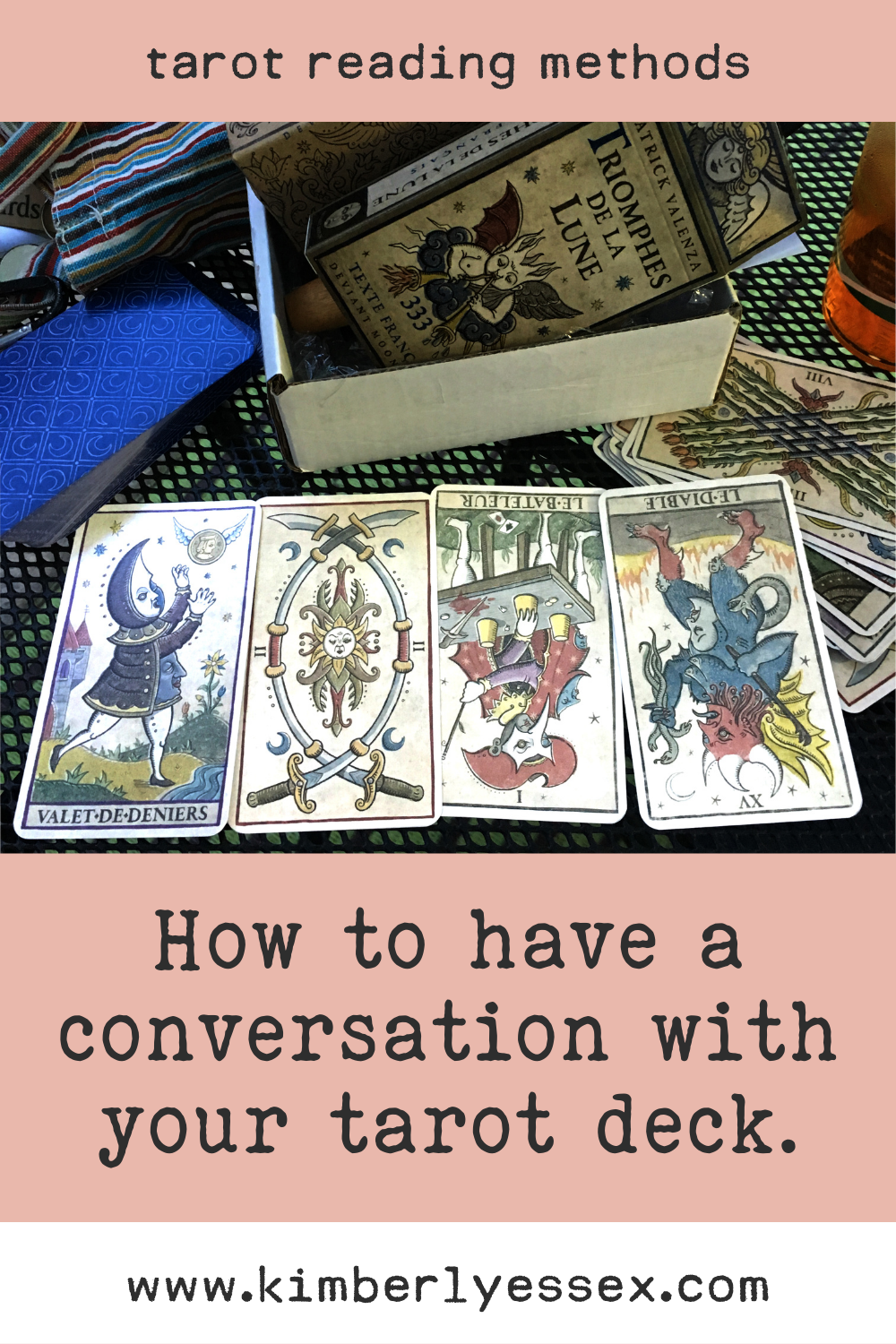Downloading the muse.
Welcome to this Ostara Tarot Blog Hop! The theme of this hop is Dawn. Hopefully you have arrived here from Joy Vernon’s post. If not, you can check it out afterward by following the “PREVIOUS BLOG” link at the top or bottom of this post.
PREVIOUS BLOG | MASTER LIST | NEXT BLOG
What’s waking you up? What’s dawned on you recently? These are a couple of the questions that Joy Vernon asked while proposing the topic for this blog hop. My mind immediately went to moments of claircognizance, or psychic downloads, that can happen during a tarot reading. Psychic downloads can happen during meditation, too. And thinking on this, I saw a connection to my writing practice as well. I never really thought too much about how my tarot reading style mirrors my approach to writing poetry--not beyond the fact that I am the person doing each. But there is a clear parallel in the way I think about both that I believe derives from a dedication to creativity and spiritual openness in all things, but you can judge for yourself.
Triomphes de la Lune by Patrick Valenza © 2017 by Diviant Moon Inc.
Claircognizance means “clear knowing.” It often arrises in the form of what is referred to as a “psychic download” because it appears suddenly and seemingly out of no where. For me, it feels a lot like waking up. Suddenly you are awake to something you had no awareness of the moment before.
I asked the Triomphes de la Lune for guidance in writing about this topic and pulled the Knight of Pentacles. Interestingly, we find the knight here appearing to have just woken up! Although the Knight of Pentacles is generally depicted as the slowest moving knight in the tarot, it is
unusual to find him in such a sleepy state. In any tarot based on the Rider Waite Smith tradition--which this deck is not--the Knight of Pentacles will be found surveying the land as if he is planning and preparing for something. And this is what I would like to discuss here: how both poets and tarot readers lay the groundwork for the muse--or the psychic download--to appear and what happens when you do this.
1. Knowing the muse when you find her.
In grad school, I had a reputation for being able to find “all the good books” when I went in to any bookstore with my poet friends. This wasn’t remarked upon kindly unless one of them felt they were picking up a touch of the “gift.” At the time, I had a practice of walking through and scanning nearly all of the books the store had to offer. Sometimes I would spot something and at other times I could feel the pull of something calling for me to look at it--even if I was standing and talking to a friend, not looking at the books at all.
The fact that I first met Gertrude Stein in the art section of a bookstore sums up the relationship I continue to have with her writing until this day. Even better that it happened to be a volume of her work called How to Write. While the promise of teaching me to write was a factor in my opening the book, the fact that I was standing among art books allowed for an open mind that did not reject what I found there but instead saw it as the book of magical spells I could only dream of as a creative and spiritually inclined child.
How to Write by Gertrude Stein © 1975 by Dover Publications, Inc.
From my first random opening of the book, I still remember stopping short as I read “And and they will go.” Already the sentences were unusual, but I was able to read them smoothly due to some semblance of proper grammar. But “And and” stopped me. I couldn’t find a way to read it until I decided the first “And” must be a name. Or Stein may have been referring to “And” and “they” as the words themselves. I did not learn from this how or where or why “And” and “they” went, but I was able to keep reading. And I found myself reading in a way I never had before--not for meaning, but for grammar. The meaning--at least in the function of the text as magic spell--was not to be found in the words but in the experience of reading them. If you try this at home, I recommend you do so aloud and with a friend. Not that there is any danger in reading it, but just for the full effect.
Triomphes de la Lune by Patrick Valenza © 2017 by Diviant Moon Inc.
If one wants to find the muse--while writing or while reading tarot--it is paramount that one can recognize the muse when she appears. I find that the feeling of my thinking will change. One hardly knows what thinking feels like or that it has a feeling until that feeling shifts. But that shift I experience in reading Stein’s How to Write comes close to describing it, only it comes with more flow and without a known cause for the shift aside from the fact that I prepared myself for the muse’s arrival.
2. Laying the groundwork for the muse.
Now, when it comes to reading the tarot for others, I have never been a fan of bragging about one’s psychic “gifts” or making promises about delivering psychic readings. That always sets one up for potentially having to put on an act when the muse doesn’t show up on demand and I am more interested in offering an authentic reading. So, I promise to read the cards and that is all. There is a lot to be gained from simply reflecting on the cards themselves. Many psychologists influenced by Carl Jung use tarot cards or other images in their practice. The tarot can offer a new perspective or a different idea of what action to take. And even when the cards simply reflect what you already know, it’s kinda impressive that some randomly pulled cards can do that! But sometimes the muse does show up, and in my opinion it is only more magical because it was never promised. This is especially effective when reading for atheists as they will be telling of the magic when it arrives instead of the reader having to convince them of anything.
So, in tarot, we prepare for the muse by laying the cards and simply telling what we know about them and relating that to the querant’s life or question. Likewise, in writing or in any art, one shows up to the page (or canvas or instrument) whether the muse has struck you with inspiration or not. When I was young, I wanted poetry to arrive fully formed and so I only sat down to write it when inspiration hit. If you’ve tried this you may know: there is nothing worse for an artist than having inspiration hit and not being able to get it out onto the paper. Not only because there may not be paper or a writing utensil in front of you but because you’ve fallen out of practice with getting words down on the page.
Interestingly, this wasn’t a problem when I had a solid art practice. It was natural to draw just for the sake of drawing. Stein’s How to Write showed me how to apply this to writing. So now when I show up to the page with nothing to say, I put my attention on the grammar instead of the meaning. I find words and put them on paper. I list sentences and couple words. I write because a writer writes.
3. Grabbing the muse by the hand.
Triomphes de la Lune by Patrick Valenza © 2017 by Diviant Moon Inc.
Something I like to do when writing--perhaps to see if the muse is there--is to stop just before placing a word down in order to feel if there is a different word available. I don’t mean a synonym but an unexpected word that will throw the writing into a whole new direction that I wasn’t planning to go. I don’t think for this word so much as feel for it or look for it. If nothing appears out of thin air I will scan my environment or close my eyes and see what my gaze lands upon when I open them again. I would love to hear about your experience if you have done this before or if you decide to go and try it!
In reading tarot, grabbing the hand of the muse for me means having a conversation with the cards. This is something it took me some time to master because for a long time I only knew how to read tarot with a spread I had planned out ahead of time and I hadn’t realized there was another way to go about it. To have a conversation with the cards, you simply make up the questions as you go, allowing each question to be inspired by the answer the tarot just gave you to the previous question.
I chose to work with the Triomphes de la Lune for this post because it’s the first tarot deck I ever had a conversation with and in fact you can read a part of that conversation here. It was my first time, so don’t allow that example to limit the possibilities for you. If you want to give it go, try proposing this question to your tarot: What would you like to talk about today? And then follow up with more questions to open up and explore the answer it gave you.
xo
kim
PREVIOUS BLOG | MASTER LIST | NEXT BLOG
Thank you for stopping by and I hope you are enjoying this Ostara Tarot Blog Hop on the theme of Dawn! Much love and thanks to Joy Vernon for putting this blog hop together ♥ Please continue on to Jay Cassels’ post by following the “NEXT BLOG” link at the top or bottom of this post. Thank you for reading!
-
archive
- Aug 1, 2023 Where am I going; a Chariot and Knights tarot spread.
- Jun 21, 2023 Transitions; mapping a path forward.
- Jun 4, 2023 A Two of Cups tarot spread.
- May 1, 2023 Love me better; a tarot spread.
- Mar 20, 2023 Downloading the muse.
- Feb 1, 2023 Three ways to begin again.
- Dec 21, 2022 Looking back at a year ahead tarot spread.
- Oct 31, 2022 Connecting with an ancestor through the Dali Tarot.
- Jun 20, 2022 How to tell time with the tarot.
- Jun 20, 2022 Magick Lesson: How to be cozy in your skin.
- Jun 20, 2022 Talking to spirit with tarot.
- Jun 20, 2022 A meditation for Mabon.
- Jun 20, 2022 The Devil’s Spectrum; a tarot spread.
- Jun 19, 2022 Tarot Deck Interview: Triomphes de la Lune
